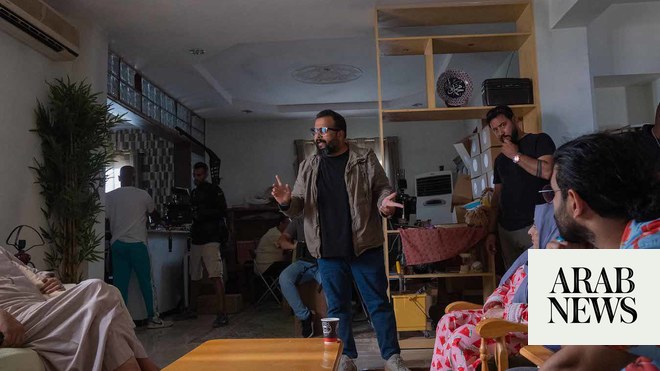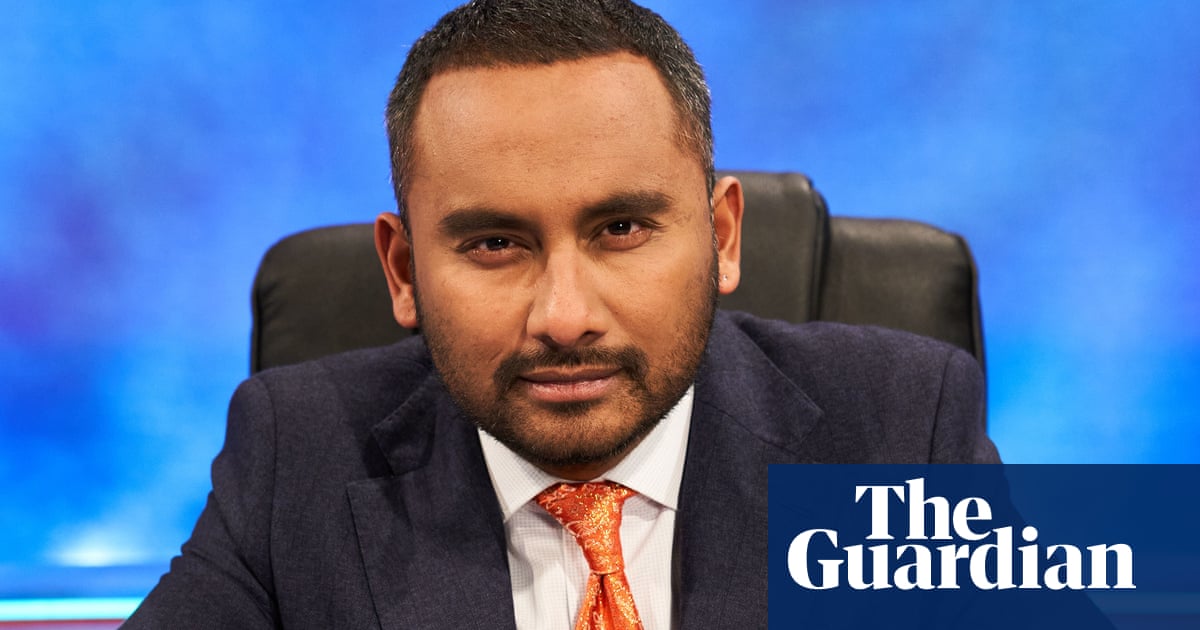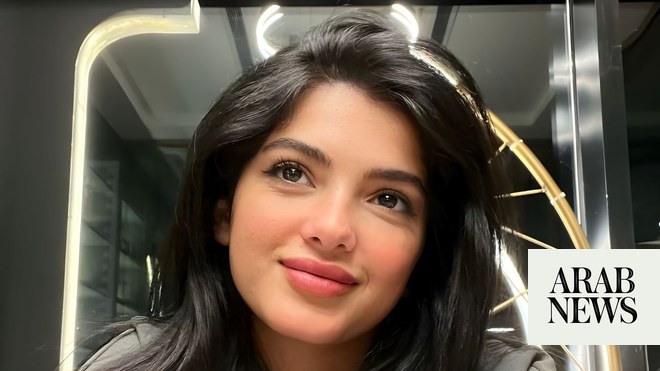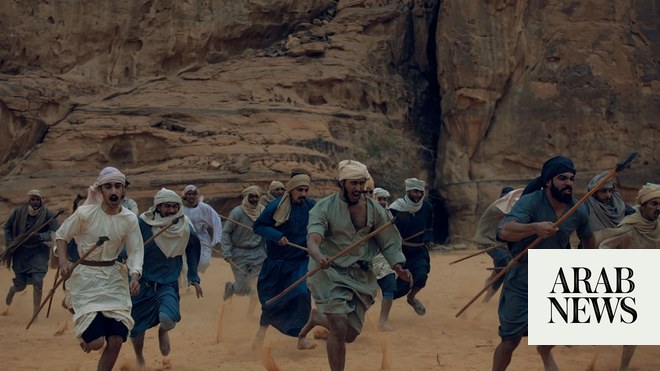
Director Sultan Al-Abdulmohsen and writer Yaser Hammad on the making of their Jeddah-based series
DUBAI: Long before we travel, it’s television that introduces us to the world. Because of “Friends” and “Seinfeld,” for example, New York feels like home to millions who have never set foot in the United States. That, according to Saudi director Sultan Al-Abdulmohsen and writer Yaser Hammad, is precisely why “Tahir’s House” is more than just Netflix’s first original Saudi comedy series. For all of those involved, this was the chance they’d always dreamed of to share the distinct spirit of Jeddah with people from across the globe.
For the latest updates, follow us on Instagram @arabnews.lifestyle
“It was so important to us to make a show that felt authentic for Saudis, but from day one this was about more than that,” Al-Abdulmohsen tells Arab News. “From the time I was a child, I knew what life was like in the West, but Western people knew nothing about life in Saudi Arabia. This was our chance to return the favor. With ‘Tahir’s House,’ we wanted to translate the feeling of what it means to be Saudi to people from everywhere.”
Yaser Hammad, Joud Alsufyani, Mohammed Elfara, and Alhashimi Alfaisal on set. (Supplied)
To understand the series, which premieres Sept. 6 on Netflix, think “The Bear” meets “Modern Family.” In it, a luckless man named Yousef (Alhashimi Alfaisal), unable to land a job, joins forces with his family in an attempt to transform their failing fish shop, which is facing foreclosure, into a thriving business. Through the season’s first six episodes, we get to know multiple generations of the Tahir family, an intentional survey not only of the distinct personalities found in the coastal city, but an exemplar of its extraordinary transformation over the last 50 years.
“To me, the heart of this series is Jeddah. I’m obsessed with Jeddah’s history — most of my library at home is lined from floor to ceiling with books about it. Because of its location on the sea and its proximity to Makkah, this has long been a diverse city of immigrants — a melting pot of cultures and experiences. This is a Saudi show, yes, but Saudi is not a monoculture. The depth we can bring to the show depends on the layers that we can mine of the city’s specificity,” says Hammad.
Naimah Ahmad, Mohammed Bakhash, Joud Alsufyani and Alhashimi Alfaisal in “Tahir’s House.” (Supplied)
“That is why we made this a family of fishermen. There has been palpable shift between generations. A grandfather who worked the docks in the Seventies had a son who became a poet, and his son became a DJ, for example. That creates a very interesting dialogue between them all to explore,” Hammad continues.
As a result, they had to work to make the characters feel not only distinct, but for each to be an authentic representation of a different facet of the city. That includes spirited grandmother Lutfiya (Naimah Ahmad), wise-cracking father Jumaa (Mohammed Bakhash), and precocious, Korea-obsessed young daughter Azizah (Joud Alsufyani). To bring them to life, it came down not only to casting — a daunting task in a promising but nascent industry without a wide array of proven talent — but to preparation.
“As much as we want people to understand our culture, this is not a history lecture. That alone would put most audiences to sleep,” says Al-Abdulmohsen. The key to making this work was the human element. The audience needs to be able to see that this is a family that loves each other — they have to feel like a real family. We had to find the right people. And, believe me, that wasn’t easy. Then, more importantly, we had to forge a genuine connection between them.”
“Tahir’s House” poster. (Supplied)
That was a daunting task for Al-Abdulmohsen. From the outset, the director brought in acting coaches to shape the cast’s raw talent, then got the group to spend extended time together off-camera before filming began.
“We had to feel like they’d really grown up together, and getting there was a process. It took a lot of work — we got them to stay together, to get to know each other on a real level outside of their characters; to find common interests and understanding. When they bonded in real life, that’s when it all started to gel in front of the camera,” Al-Abdulmohsen.
In order to ensure the show was up to global standards behind the camera, the team borrowed a tried-and-true structure from Hollywood, establishing a ‘writer’s room’ of different voices all working together to shape the series, the standard practice for most shows in the US. Hammad served as head writer, tapping into the diverse viewpoints of the other assembled writing talent to elevate the material.
“Tahir’s House” is on Netflix. (Supplied)
“I feel this is something that’s been missing from TV writing in Saudi. It’s a development long in the making, but we have rarely had series that were trying to lay the groundwork for something that could last. By doing it in a more organized way, we were able to work as a team, with five writers all from different backgrounds, and all with distinct input. That really broadened the show’s resonance past what I could have accomplished alone,” says Hammad.
Throughout the experience, as much as they were influenced by series such as “Modern Family,” it was important to all involved that this never felt like an American series. The sense of humor, importantly, had to feel both globally accessible but unmistakably Saudi.
“There’s a lot to comedy that is universal — pacing, structure, and knowing when to hit the punchline. But there needs to be a balance. If it’s not hyper-local then it won’t feel authentic to the community, and then we won’t have done our jobs of capturing the real Saudi. That came down to filling it with specific references, and in making sure that each of us asked the other at every turn whether we felt represented by these characters and their actions,” Hammad explains.
“Tahir’s House” is a Saudi comedy series. (Supplied)
While the first season has a very specific story arc, following the cast as they attempt to save the family business before it’s forced to close forever, each character is also rich enough to fuel years of storylines to come. While no further seasons have been confirmed, if the show is successful, both Hammad and Al-Abdulmohsen both hint that they have already had conversations about where the show could go long-term, as it hopefully has a similar longevity and cultural resonance to that which the shows that inspired it still enjoy.
“We love what we accomplished here, but, yes, we do have so many stories left to tell. We all bonded making this, and these actors made characters that started as one-dimensional sketches into three-dimensional human beings,” says Hammad. “From top to bottom, everyone was involved in making this great, and I hope we can continue on this journey for years to come.”
-ADVERTISEMENT-












